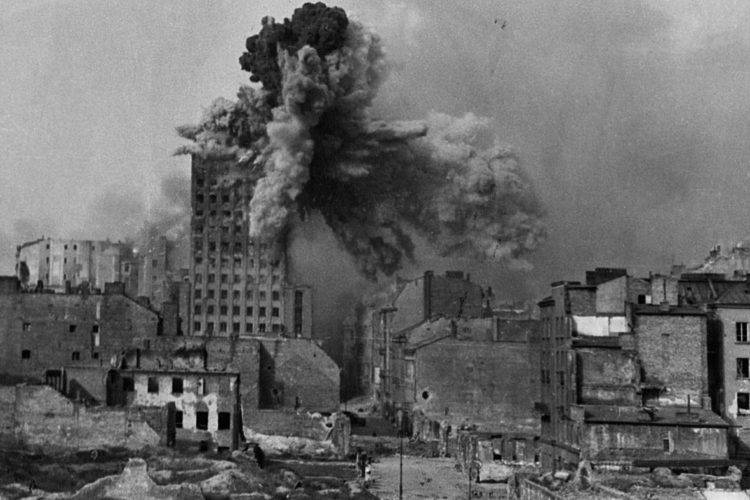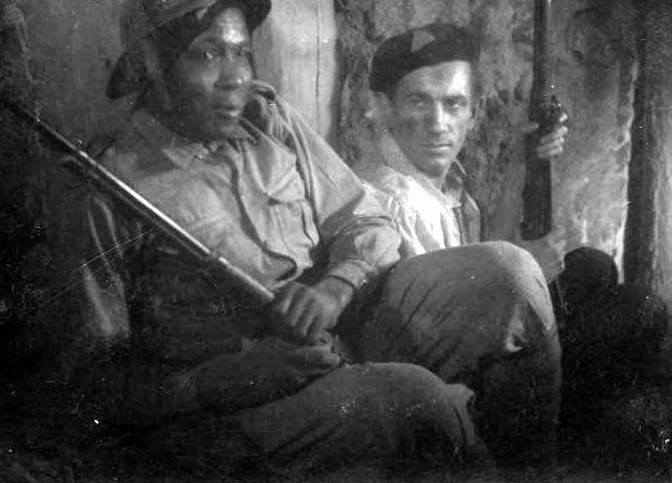August Agbola O’Brown was born in Nigeria in 1895 and migrated to Poland in 1922. Because his mother was of Polish descent, he spoke Polish, English and three other languages. He was jazz musician, which was all the rage at these times and played in Warsaw nightclubs. Apparently, he wasn’t the best musician, but he was described as charming and intelligent and that was enough to gain popularity. He married Zofia Pykówna.

Photo from 1932, appeared in Warsaw tabloid “Tajny Detektyw”.
Here’s what local press wrote about the wedding:

“A Black-White marriage. Strictly speaking, not black-white, but white-chocolate marriage, that took place in Kraków, where authentic Negro, Mr. August Braoun married authentic Polish woman, Ms. Zofia Pykówna. Exotic wedding gathered crows in church. You can see newlyweds and wedding guests on our photography”
Just imagine the triggers if you’d publish this today! (both left and right would be fuming at this) But – take note, that given context, there’s zero racism here. Black people in pre-war Warsaw must’ve been a novelty and surely there were no more than a dozen Africans living there at the time. Poland had strong multi-cultural traditions and was very tolerant, with big Jewish, Ruthenians, Armenians, Lithuanians and German societies that lived together – until World War II and Stalin’s regime.
O’Brown must’ve been viewed with curiosity and comparing to United States, there were no segregation, no interracial marriage bans and lynchings. Everyone looks happy on the photo, there were crowds in a church, and no one complained about this “authentic Negro that married authentic Polish woman”. They had two sons, born in 1928 and 1929.
World War II and Warsaw Uprising
In 1939 Poland became first victim of Nazi belligerents. Germans occupied Warsaw after a siege. During occupation, he worked as an electrical appliance salesman and quickly joined the ranks of resistance Polish Home Army, the biggest partisan forces in World War II. He toiled in secret work against the Nazis and distributed underground press, which was punishable by death if caught by Gestapo – Nazi police. Every resistance soldier had alias, and he chose “Ali” as his nickname.

Gestapo thugs shooting partisans, probably Eastern Front
When Warsaw Uprising broke in 1944 he took arms in face of impossible odds and fought in the unit from Śródmieście Południowe district. He also served in communication center and as phone operator.

Warsaw Uprising partisans.
Resistant soldiers fought valiantly and with great skill for 100 days. As SS Chief Heinrich Himmler said,
“This is the fiercest of our battles since the start of the war. It compares to the street battles of Stalingrad.”
However, partisans couldn’t defeat organized frontline armed forces that included tanks, heavy artillery and aircraft. Germans also resorted to using civilians as shields and brought Kaminski’s penal battalions consisted of criminals to rape, murder and pillage as a way of war.

Super heavy railroad mortar Karl-Gerät destroying Prudential skyscraper, at its time second largest building in Europe
Germans brutally crushed Warsaw Uprising, killing 200 000 people in total. Hitler was furious and ordered Warsaw to be turned into dust. Germans leveled the city block by block. In aftermath, over 85% of the city was destroyed and Warsaw became most devastated capital in World War II. Fortunately, O’Brown survived the war.
Postwar life
After the war, he received employment in Department of Culture and Art of the Warsaw City Hall and in the evenings, while still playing jazz in Warsaw restaurants. In 1953 he even played an episodic role in 1953 Polish propaganda movie “Żołnierz Wolności” („Soldier of Victory”) about the life of communist general Karol “Walter” Świerczewski.
Świerczewski commanded Polish communist forces during World War II and participated in Spanish Civil War as a Republican general, supported by Soviet Union. Świerczewski befriended Hemingway and was portrayed in “For Whom The Bell Tolls” as General Golz, but that is another story.

Shot from „Soldier of Victory” (1953) where August Agbola O’Brown plays Republican Volunteer soldier. Talk about diversity! It wasn’t possible to portray black, Asian and white man as comrades in arms in American cinema yet, but the communists wanted to serve the message that their struggle has international character and that volunteers from around the world flock to Red Banner. It’s all hyper-propaganda anyway, not worth watching. Świerczewski is now considered war criminal – and he died mysterious death, most likely assasinated by Soviets.

Another shot.

And another one.
Finally, when Stalin died, Polish borders were at least slightly opened and he was allowed to migrate to United Kingdom in 1956 with his family. He remained silent about his war experiences, didn’t publish any memoirs, and passed away in 1976 in London.
His story was just recently discovered. He remains the only known black insurgent against Nazi Germany in Free Polish forces.







“Żołnierz Wolności” does not mean “Soldier of Victory”. It means Soldier of Freedom.
He was not half-Polish. The newspaper – a historical source – is authentic and therefore to be trusted over your opinion that August’s mother was Polish. The newspaper reiterates that he was an authentic Negro, by which we understand pure black. If, however, you have some type of proof, that would be more convincing.